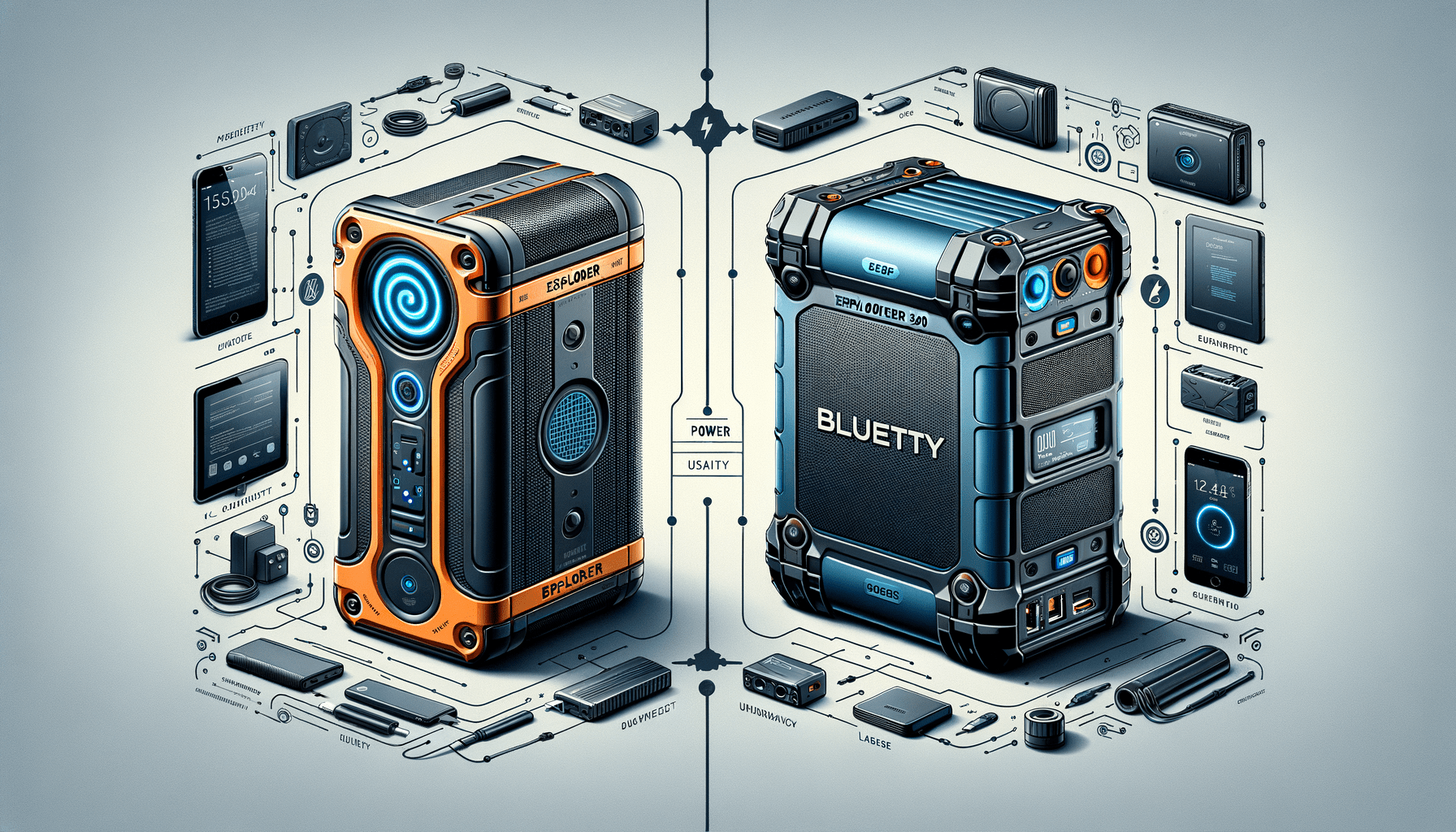When it comes to selecting the best portable power station, the decision-making process can feel like splitting hairs. Today, we’re diving deep into a technical comparison between two market leaders: the Jackery 2000 Plus and the EcoFlow Delta mini. Both cater to a variety of power needs but differ in features and capabilities. This comparison aims to provide you with all the details you need to make an informed decision on which portable power solution suits your lifestyle.
First Glance: Dimensions and Portability
Before diving into the technical specifications, let’s start by sizing them up. The Jackery 2000 Plus boasts dimensions of 14.7 x 18.6 x 14.1 inches and weighs 61.5 lbs, making it the bulkier option. In contrast, the EcoFlow Delta mini is slightly more compact and lighter at 14.9 x 7.2 x 9.4 inches and 23.6 lbs, which could be a dealbreaker for those prioritizing portability.
Power and Performance
If you’re looking for sheer power, the Jackery 2000 Plus delivers a rated power expandable up to 6000 watts with additional battery packs, dwarfing the EcoFlow Delta mini’s 1400W output. However, for more moderate power needs, the Delta mini’s output might be more than adequate and could offer a better weight-to-power ratio.
Capacity and Energy Use
Energy capacity is a crucial factor in choosing a power station. The Jackery 2000 Plus starts at a considerable 2 kWh, expandable up to a massive 24 kWh with parallel units and additional battery packs. On the other hand, the Delta mini has a fixed capacity of 882Wh, which still provides ample power for a wide range of devices.
Charging Options
Both units support solar, wall, and car charging. The Jackery 2000 Plus has an edge in solar charging speed, fully charging in about 2 hours with the right setup. The Delta mini, though slightly slower in solar charging, excels with its fast wall charge capability, offering a full recharge in approximately 1.6 hours.
Battery and Longevity
Battery type and life vary between these power stations. The Jackery 2000 Plus is equipped with a LiFePO4 battery, famed for its durability, providing up to a decade of use. The Delta mini uses an NCM Li-ion battery, which retains 80% capacity after 800 charge cycles, a decent lifespan for its battery chemistry.
Tech Specs at a Glance
| Jackery 2000 Plus | EcoFlow Delta mini | |
|---|---|---|
| Dimensions (in) | 14.7 x 18.6 x 14.1 | 14.9 x 7.2 x 9.4 |
| Weight (lbs) | 61.5 | 23.6 |
| Rated Power (W) | Up to 6000 (with expansion) | 1400 |
| Capacity (Wh) | 2000 – 24000 (with expansion) | 882 |
| Solar Charging Time (hrs) | ~2 | 3-6 |
| Wall Charging Time (hrs) | ~2 | 1.6 |
| Car Charging Time (hrs) | 25 | Varies |
| Battery Type | LiFePO4 | NCM Li-ion |
| Battery Lifespan | Up to 10 years | 80% after 800 cycles |


Flexibility and Additional Features
Both power stations come with a rich set of features. For technology enthusiasts, the Jackery 2000 Plus offers smart app control for remote monitoring. EcoFlow Delta mini users can also benefit from its corresponding mobile app for smart management of power usage.
Conclusion
Both the Jackery 2000 Plus and EcoFlow Delta mini bring solid capabilities to the table. Choosing the right one ultimately depends on your requirements for portability, power, battery life, and features. We hope this technical comparison has provided you with the clarity to decide on your next portable power station.


Leave a Reply